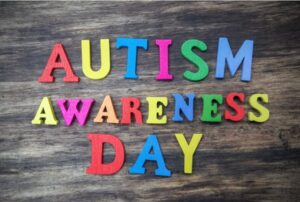During winter, 7-year-old Emma seemed different. She wasn’t excited about her favorite coloring books or playing with her friends. Instead, she often looked tired and uninterested. Emma’s parents began to wonder if the lack of sunlight in winter was affecting her mood. This could be a sign of Seasonal Affective Disorder (SAD), a condition tied to seasonal changes.
What is Seasonal Affective Disorder?
SAD is a type of mood disturbance often seen during fall and winter due to reduced sunlight. The lack of sunlight can disrupt the balance of melatonin and serotonin in the body, which are critical for regulating mood. Children with SAD may show signs like low energy, difficulty concentrating, mood swings, or even disrupted sleep patterns.
Here are practical ways to help your child maintain a positive mood during winter and ward off the effects of SAD:
1. Increase Exposure to Natural Light
Limited sunlight is one of the primary triggers of SAD. Encouraging your child to get as much natural light as possible is key:
- Take your child outside for a walk during daylight hours, even if it’s cloudy.
- Keep the curtains open during the day to let in sunlight.
Pro Tip: Consider using a light therapy box to simulate sunlight and help regulate your child’s internal clock if outdoor light exposure is insufficient.
2. Maintain a Consistent Sleep Routine
Winter’s shorter days can disrupt a child’s sleep-wake cycle. A regular sleep schedule helps support emotional and physical health:
- Set consistent wake-up and bedtime hours.
- Limit screen time an hour before bed to improve sleep quality.
3. Encourage Regular Physical Activity
Exercise boosts endorphin production, improving mood and reducing stress. Incorporate movement into your child’s daily routine:
- Indoor activities: Yoga, dance, or interactive fitness games.
- Outdoor activities: Sledding, hiking, or playing in the snow, ideally during daylight hours.
Scientific Insight: Research shows that 30 minutes of moderate exercise daily significantly lowers the risk of depression and anxiety.
4. Focus on a Balanced Diet
Diet plays a significant role in regulating mood. Ensure your child’s meals include mood-enhancing nutrients like Vitamin D, Omega-3 fatty acids, and complex carbohydrates:
- Vitamin D: Fatty fish, egg yolks, fortified milk.
- Omega-3 fatty acids: Salmon, walnuts, flaxseeds.
- Complex carbohydrates: Oatmeal, whole-grain bread, brown rice.
Extra Tip: Consult your doctor about Vitamin D supplements to compensate for reduced sunlight exposure during winter.
5. Create a Warm and Engaging Home Environment
A cozy, supportive home environment can help lift your child’s spirits:
- Spend time together on fun activities like baking, reading, or crafting.
- Offer verbal encouragement and emotional support to help your child feel loved and understood.
6. Foster Interests and Hobbies
Encouraging your child to explore new hobbies can shift their focus away from low moods:
- Try creative activities like painting or music.
- Sign up for interest-based classes or community programs to foster social connections.
7. Recognize Warning Signs and Seek Help
If your child’s low mood persists for over two weeks or interferes with daily life, consult a healthcare professional. Counseling or therapy can help your child overcome SAD and regain emotional balance.
8. Keep the Communication Open
Finally, listen to your child’s thoughts and feelings. Regular check-ins, like asking, “How are you feeling today?” can reassure them that they’re supported.
Conclusion
While winter’s limited sunlight can affect children’s emotions, making lifestyle adjustments and creating a nurturing environment can help them stay emotionally balanced. By observing your child closely and taking proactive steps, you can prevent SAD and ensure they thrive even during the colder months—just like Emma’s parents did.
References
- National Institute of Mental Health (NIMH). Seasonal Affective Disorder.
- Mayo Clinic. Tips for Managing Seasonal Affective Disorder in Children.
- Harvard Health Publishing. Diet and Mood: How Food Affects Your Mood.
- American Academy of Pediatrics (AAP). Promoting Healthy Sleep in Children.













